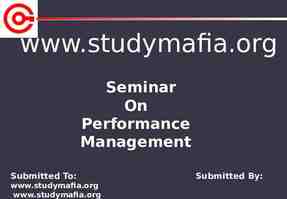POWERED INDUSTRIAL TRUCKS (PIT) OSHA 29 CFR 1910.178 PPT-028-02
37 Slides1.53 MB
POWERED INDUSTRIAL TRUCKS (PIT) OSHA 29 CFR 1910.178 PPT-028-02 Bureau of Workers’ Comp PA Training for Health & Safety (PATHS) 1
OSHA Standard for PIT The scope provisions of 1910.178(a), which based on ANSI B56.1-1969, cover: Fork trucks, tractors, platform lift trucks, motorized hand trucks and other specialized industrial trucks powered by electric motors internal combustion engines. are or The standard does not apply to compressed air or non-flammable compressed gas-operated industrial trucks, farm vehicles or vehicles intended primarily for earth moving or over the road hauling. PPT-028-02 2
PIT - Definition A mobile, power-propelled truck used to carry, push, pull, lift, stack or tier materials (American Society of Mechanical Engineers definition). Vehicles that are used for earth moving and overthe-road hauling are excluded. PIT’s are commonly known as forklifts, pallet trucks, rider trucks, forktrucks or lift trucks. Can be powered through electric or combustion engines. PPT-028-02 3
Performance Oriented Powered industrial truck operator training requirements are performance oriented. Allows employers to tailor a training program to characteristics of their workplaces and the particular types of powered industrial trucks used. PPT-028-02 4
Operator Training Only trained and authorized operators shall be permitted to operate fork trucks. Employer must ensure training has been provided to include formal instruction (classroom), practical training (hands on) and evaluation. PPT-028-02 5
Operator Training SAFE OPERATION: The employer shall ensure that each powered industrial truck operator is competent to operate a powered industrial truck safely, as demonstrated by successful completion of the training and evaluation specified in the OSHA standard. Prior to permitting an employee to operate a powered industrial truck (except for training purposes), the employer shall ensure that each operator has successfully completed the required training (or previously received appropriate training). PPT-028-02 6
Training Program Implementation Trainees may only operate a powered industrial truck: Under direct supervision of a person who has the knowledge, training and experience to train operators and evaluate their competence; and Where such operation does not endanger the trainee or other employees. PPT-028-02 7
Training Program Training shall consist of a combination of: Formal instruction (e.g., lecture, discussion, interaction, computer learning, written material). Practical training (demonstrations and exercises performed by the trainee). Evaluation of the operator’s performance in the workplace. PPT-028-02 8
Training Program Training and evaluation shall be conducted by a person with the knowledge, training and experience to instruct powered industrial truck operators and evaluate their competence. PPT-028-02 9
Training Program Content PIT Operators shall receive initial training in the following topics (excepting topics that the employer can demonstrate are not applicable to safe operation in the employer’s workplace): TRUCK-RELATED TOPICS WORKPLACE-RELATED TOPICS REQUIREMENTS OF THE STANDARD PPT-028-02 10
Training Program Content TRUCK-RELATED TOPICS: Operating instructions, warnings, precautions Differences from an automobile Controls and instrumentation Engine or motor operation Steering and maneuvering Visibility PPT-028-02 11
Training Program Content TRUCK-RELATED TOPICS: Fork and attachment adaptation, operation, and use Vehicle capacity and stability Vehicle inspection/maintenance operator will perform Operating limitations Other instructions, etc. PPT-028-02 12
Training Program Content WORKPLACE-RELATED TOPICS: Surface conditions Composition and stability of loads Load manipulation, stacking, unstacking Pedestrian traffic Narrow aisles, restricted areas PPT-028-02 13
Training Program Content WORKPLACE-RELATED TOPICS: Operating in hazardous locations Operating on ramps and sloped surfaces Potentially hazardous environmental conditions Operating in closed environments or other areas where poor ventilation or maintenance could cause carbon monoxide or diesel exhaust buildup PPT-028-02 14
Training Program Content THE REQUIREMENTS OF THE OSHA STANDARD MUST ALSO BE INCLUDED IN THE INITIAL OPERATOR TRAINING PROGRAM! PPT-028-02 15
Refresher Training and Evaluation Refresher training, including evaluation of effectiveness of that training, shall be conducted to ensure the operator has the knowledge and skills needed to operate the powered industrial truck safely. Refresher training is required when: ۰ Unsafe operation ۰ Accident or near-miss ۰ Evaluation indicates a need ۰ Different type of equipment is introduced ۰ Workplace conditions change PPT-028-02 16
Refresher Training & Evaluation An evaluation of each powered industrial truck operator’s performance must be conducted: ۰ After initial training ۰ After refresher training ۰ At least once every three (3) years PPT-028-02 17
Stability Triangle PPT-028-02 18
Vertical Stability PPT-028-02 19
Avoidance of Duplicative Training If operator has previously received training in a topic specified in this section, and training is appropriate to the truck and working conditions encountered, additional training in that topic is not required if operator has been evaluated and found competent to operate the truck safely. PPT-028-02 20
Certification The employer shall certify that each operator has been trained and evaluated as required by the standard. Certification shall include: Name of the operator Date of the training Date of the evaluation Identity of instructor/evaluator PPT-028-02 21
Appendix A – Stability of Powered Industrial Trucks Appendix A provides nonmandatory guidance to assist employers in implementing the standard. This appendix does not add to, alter or reduce the requirements of this section. PPT-028-02 22
Batteries CHANGING AND RECHARGING BATTERIES: Changing and/or charging must be located in areas designated for that purpose. Area must have facilities to flush and neutralize spilled electrolyte. Eyewashes and showers must be available. Must have adequate fire protection. “No smoking” in charging area. PPT-028-02 23
Batteries Must protect chargers from vehicle damage. Must adequately ventilate for vapors from gassing batteries: – Hydrogen gas emitted – Very flammable Overhead hoist or equivalent must be used to handle batteries. Wear appropriate PPE. PPT-028-02 24
Batteries A carboy tilter or siphon must be provided for handling electrolyte. Pour acid into water, not vice versa. Open battery cover or compartment to dissipate heat. Prevent any open flames, sparks or electric arcs in battery charging areas. PPT-028-02 25
Lighting Fork trucks must have lights on both ends where general lighting is less than two lumens per square foot. PPT-028-02 26
Truck Operations Trucks shall not be driven up to anyone in front of a bench/other fixed object. standing No person shall be allowed to stand or pass under the elevated portion of any truck. Only the operator shall be permitted to ride unless additional seats/seatbelts are provided. If a truck is parked on an incline, the wheels shall be chocked/blocked. PPT-028-02 27
Truck Operations Employees are required to keep arms and legs from being placed between the uprights of the mast or outside the running lines of the truck and must also wear seatbelts (as applies). Keep stored materials at least 18 inches below sprinklers and away from lights and pipes. PPT-028-02 28
Truck Operations On an unattended truck, the load shall be fully lowered, controls neutralized, power shut off and the brake set. Fork trucks shall not be used for opening or closing freight doors. The flooring of trucks, trailers and railroad cars must be checked for holes or weaknesses before entering. PPT-028-02 29
Traveling All traffic regulations must be observed. Three truck lengths away from truck ahead. Stunt driving, racing, horseplay never permitted. Must drive slowly when floor is wet. Never run over loose objects on the roadway. PPT-028-02 30
Traveling Only loads within rated capacity should be moved. Fork trucks with defective parts must be removed from service until repaired. Fork trucks must be thoroughly inspected before each work shift. Speed shall be reduced to a safe level while negotiating turns. PPT-028-02 31
Traveling Only stable or safely-arranged loads shall be handled. Defects shall be immediately reported and corrected. Cross railroad tracks diagonally. PPT-028-02 32
Additional Requirements When grades are more than 10 percent, loaded trucks shall be driven with the load upgrade. Only safely-arranged loads should be handled. Do not operate trucks with leaks in their fuel systems. PPT-028-02 33
Free Training Websites Website provides free self-paced on-line training for forklift operators: http://www.freetraining.com/osha/forklift/forkmenu.htm. The following site also has information on safe forklift operation: http://www.clarkmhc.com/safety/new.SafetyLiftTr ucks.asp . (click on topic of interest on right side of page). PPT-028-02 34
Things to Remember Any powered industrial truck operator should receive the appropriate training before they operate the equipment (which includes emphasizing seatbelt use, as it applies). Other PIT operators should be “certified” and a method should be established to prove their certification to any inspectors. PIT operators should be evaluated by a qualified person at least every three years after their initial training/certification, and this evaluation should be documented. PPT-028-02 35
Think Safety!!!! PPT-028-02 36
Questions PPT-028-02 37










































